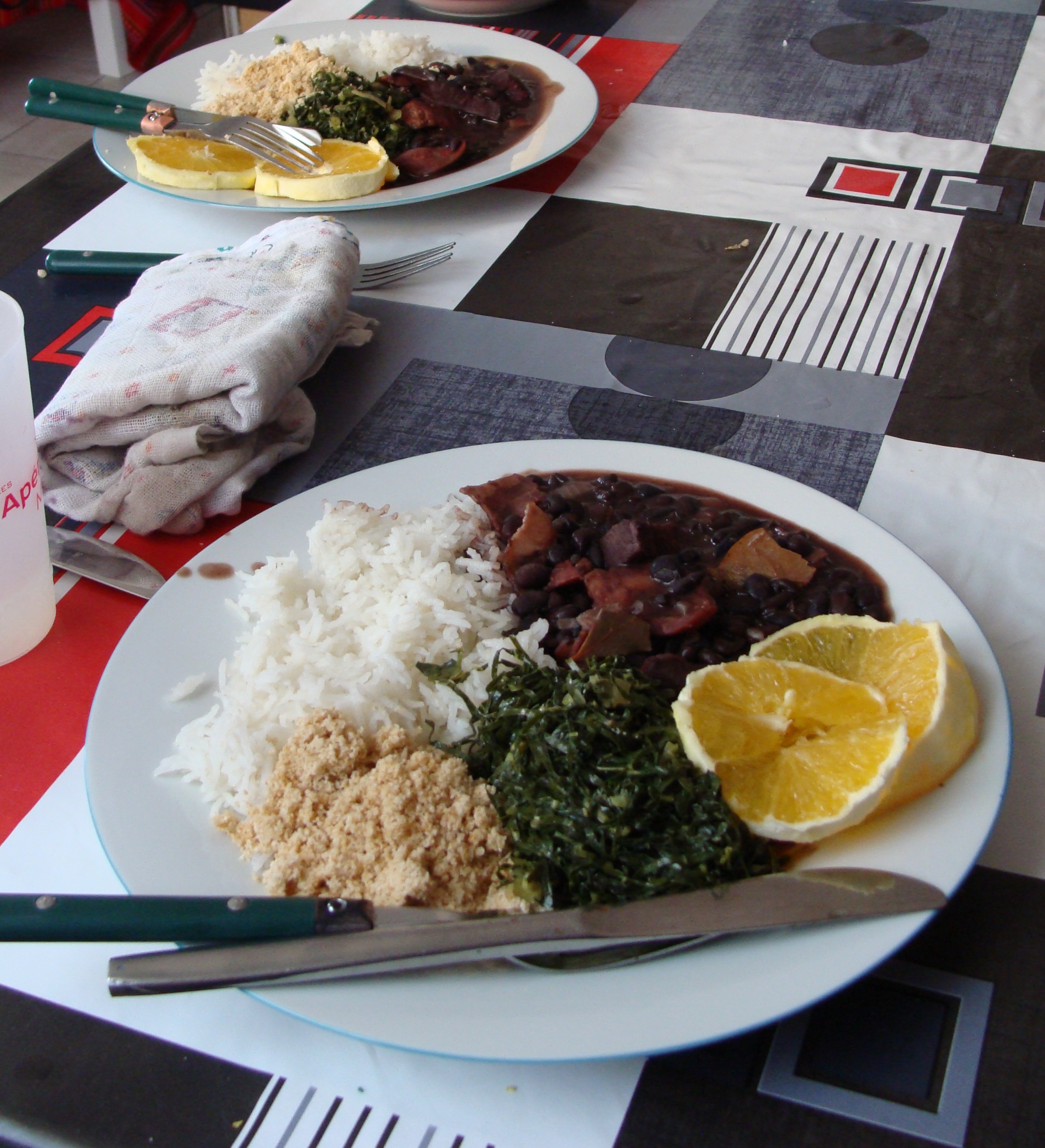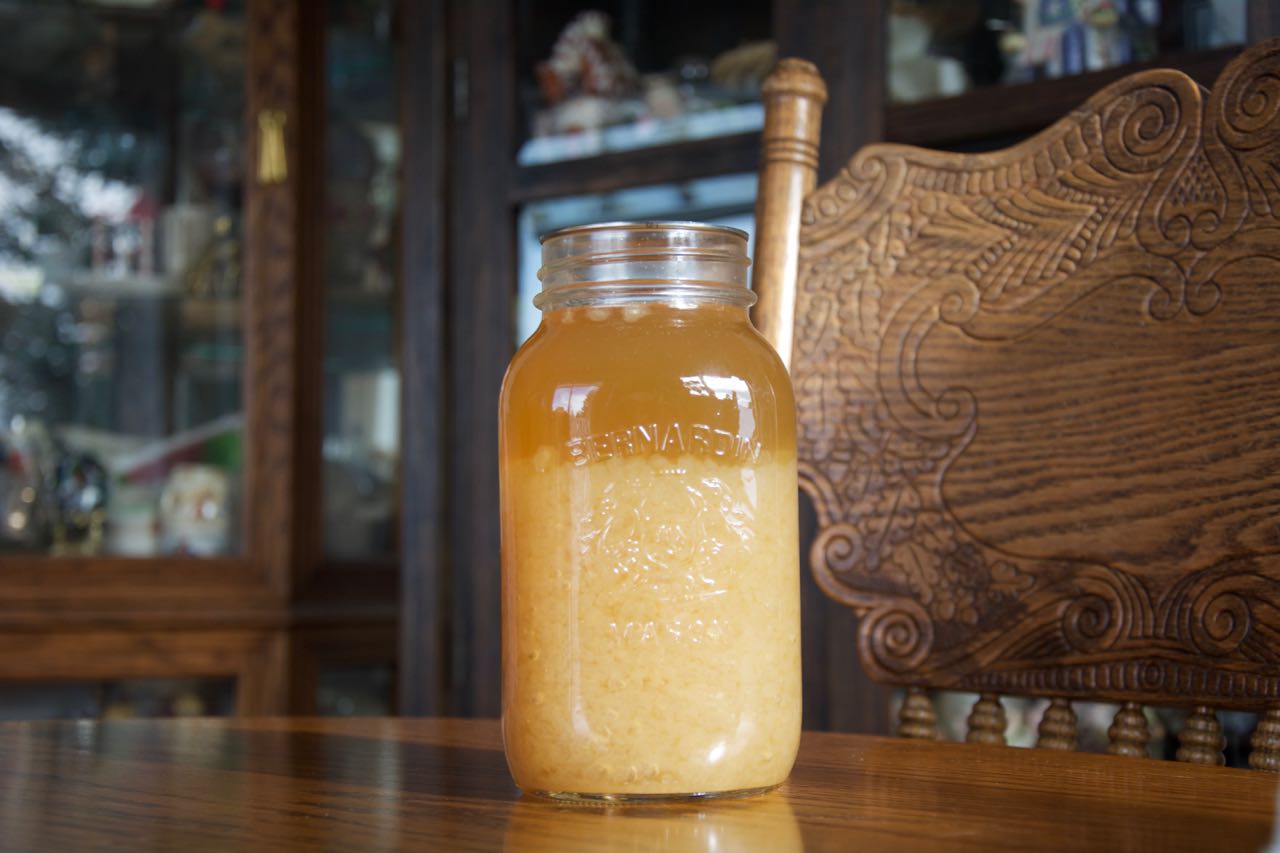|
Acaçá
Acaçá (from Fon language: àkàsà, also known as ẹ̀kọ in Yorùbá language) is a ritual food central to ceremonies of Afro-Brazilian religions, specifically to Candomblé rituals. It is found in the states of Bahia, Pernambuco, Rio Grande do Sul, and Rio de Janeiro. Pai Cido de Osun Eyin stated that "life ..is sustained, and is renewed with the ritual offering of acaçá." It has at least two variations: a similar dish made of black beans (''acaçá de feijão-preto'') and a drink (''acaçá de leite'') also used in Candomblé rituals. Acaçá is the only ritual food required in Candomblé; it is offered to all the orixás in the Candomblé pantheon. Acaçá made of white corn is offered to Oxala; that made of yellow corn is offered to Oxossi. Preparation Acaçá is made of white or red corn soaked in water for a day, which is then passed through a mill to make a paste or dough. The paste or dough is cooked in a pan and stirred continuously to reach a correct consis ... [...More Info...] [...Related Items...] OR: [Wikipedia] [Google] [Baidu] |
Vatapá
Vatapá ( Yoruba: vata'pa, ) is an Afro-Brazilian dish made from bread, shrimp, coconut milk, finely ground peanuts and palm oil mashed into a creamy paste. It is a typical food of Salvador, Bahia and it is also common to the North and Northeast regions of Brazil. In the northeastern state of Bahia it is commonly eaten with ''acarajé'', and as a ritual offering in Candomblé, with acaçá or acarajé. Vatapá is often eaten with white rice in other regions of Brazil. The shrimp can be replaced with other ingredients. Etymology "Vatapá" is probably derived from the term Yoruba ''vata'pa''.CUNHA, A. G. ''Dicionário etimológico Nova Fronteira da língua portuguesa''. Rio de Janeiro. Nova Fronteira. p. 812. Origin Vatapá is of African origin and arrived in Brazil through the Yoruba people with the name of ''ehba-tápa''. It is a typical dish of the northeastern cuisine and very traditional in the state of Bahia, where ''dendê'' (unrefined red palm oil Palm oil is an e ... [...More Info...] [...Related Items...] OR: [Wikipedia] [Google] [Baidu] |
Ogum
Ogun or Ogoun ( Yoruba: Ògún, Edo: Ògún, Portuguese: Ogum, Gu; also spelled Oggun or Ogou; known as Ogún or Ogum in Latin America) is a Yoruba Orisha that is adopted in several African religions. Ògún is a warrior and a powerful spirit of metal work, as well as of rum and rum-making. He is also known as the "god of iron" and is present in Yoruba religion, Santería, Haitian Vodou, West African Vodun, Candomblé, Umbanda and the folk religion of the Gbe people. He attempted to seize the throne after the demise of Ọbàtálá, who reigned twice, before and after Oduduwa, but was ousted by Obalufon Ogbogbodirin and sent on an exile – an event that serves as the core of the Ọlọ́jọ́ Festival. Yoruba religion In Yoruba religion, Ogun is a primordial orisha in Yoruba Land. In some traditions, he is said to have cleared a path for the other orisha to enter Earth, using a metal axe and with the assistance of a dog. To commemorate this, one of his praise names, o ... [...More Info...] [...Related Items...] OR: [Wikipedia] [Google] [Baidu] |
Ceremonial Food And Drink
A ceremony (, ) is a unified ritualistic event with a purpose, usually consisting of a number of artistic components, performed on a special occasion. The word may be of Etruscan origin, via the Latin . Religious and civil (secular) ceremonies According to Dally Messenger and Alain de Botton, in most Western countries the values and ideals articulated in both church and civil ceremonies are generally similar. The difference is in what Messenger calls the "supernatural infrastructure" or de Botton the "implausible supernatural element".Messenger, Dally; ''Murphy's Law and the Pursuit of Happiness: a History of the Civil Celebrant Movement'', Spectrum Publications, Melbourne (Australia), 2012 Most religions claim some extra advantage conferred by the deity, e.g., Roman Catholics believe that through the words of consecration in the mass ceremony, God himself becomes actually present on the altar. Both religious and civil ceremonies share the powerful psychological, social ... [...More Info...] [...Related Items...] OR: [Wikipedia] [Google] [Baidu] |
Maize Dishes
Maize (; ''Zea mays''), also known as corn in North American English, is a tall stout grass that produces cereal grain. It was domesticated by indigenous peoples in southern Mexico about 9,000 years ago from wild teosinte. Native Americans planted it alongside beans and squashes in the Three Sisters polyculture. The leafy stalk of the plant gives rise to male inflorescences or tassels which produce pollen, and female inflorescences called ears. The ears yield grain, known as kernels or seeds. In modern commercial varieties, these are usually yellow or white; other varieties can be of many colors. Maize relies on humans for its propagation. Since the Columbian exchange, it has become a staple food in many parts of the world, with the total production of maize surpassing that of wheat and rice. Much maize is used for animal feed, whether as grain or as the whole plant, which can either be baled or made into the more palatable silage. Sugar-rich varieties called sweet cor ... [...More Info...] [...Related Items...] OR: [Wikipedia] [Google] [Baidu] |
Brazilian Cuisine
Brazilian cuisine is the set of cooking practices and traditions of Brazil, and is characterized by European cuisine, European, Amerindian, African tribes, African, and Asian (Levantine cuisine, Levantine, Japanese food, Japanese, and most recently, Chinese food, Chinese) influences. It varies greatly by region, reflecting the country's mix of native and immigrant populations, and its continental size as well. This has created a national cuisine marked by the preservation of regional differences. Ingredients first used by native peoples in Brazil include cashews, cassava, ''guaraná'', ''açaí'', ''Dipteryx odorata, cumaru,'' and ''tucupi''. From there, the many waves of immigrants brought some of their typical dishes, replacing missing ingredients with local equivalents. For instance, the European immigrants (primarily from Portuguese Brazilian, Portugal, Italian Brazilian, Italy, Brazilians of Spanish descent, Spain, German Brazilian, Germany, Dutch Brazilian, Netherlands, Po ... [...More Info...] [...Related Items...] OR: [Wikipedia] [Google] [Baidu] |
Coconut Milk
Coconut milk is a plant milk extracted from the grated pulp of mature coconuts. The opacity and rich taste of the milky-white liquid are due to its high oil content, most of which is saturated fat. Coconut milk is a traditional food ingredient used in Southeast Asia, Oceania, South Asia, and East Africa. It is also used for cooking in the Caribbean, Central America, northern parts of South America and West Africa, where coconuts were introduced during the colonial era. Coconut milk is differentiated into subtypes based on fat content. They can be generalized into coconut cream (or thick coconut milk) with the highest amount of fat; coconut milk (or thin coconut milk) with a maximum of around 20% fat; and coconut skim milk with negligible amounts of fat. This terminology is not always followed in commercial coconut milk sold in Western countries. Coconut milk can also be used to produce milk substitutes (differentiated as "coconut milk beverages"). These products are not ... [...More Info...] [...Related Items...] OR: [Wikipedia] [Google] [Baidu] |
Fermented Drink
This is a list of fermented foods, which are foods produced or preserved by the action of microorganisms. In this context, Fermentation in food processing, fermentation typically refers to the fermentation of sugar to ethanol, alcohol using yeast, but other fermentation processes involve the use of bacteria such as lactobacillus, including the making of foods such as yogurt and sauerkraut. Many fermented foods are Mass production, mass-produced using industrial fermentation processes. The science of fermentation is known as zymology. Many pickling, pickled or souring, soured foods are fermented as part of the pickling or souring process, but many are simply processed with brine, vinegar, or another acid such as lemon juice. __TOC__ Fermented foods Fermented beans and seeds Fermented cheeses Most cheeses are fermented as part of their production. Fermented condiments Fermented creams and yogurts Fermented grains and grain-based foods Fermented fru ... [...More Info...] [...Related Items...] OR: [Wikipedia] [Google] [Baidu] |
Maranhão
Maranhão () is a States of Brazil, state in Brazil. Located in the country's Northeast Region, Brazil, Northeast Region, it has a population of about 7 million and an area of and it is divided into 217 municipalities. Clockwise from north, it borders on the Atlantic Ocean for 2,243 km and the states of Piauí, Tocantins and Pará. The people of Maranhão have a distinctive accent within the common Northeastern Brazilian dialect. Maranhão is described in literary works such as ''Canção do exílio, Exile Song'' by Gonçalves Dias and ''Casa de Pensão'' by Aluísio Azevedo. The dunes of Lençóis Maranhenses National Park, Lençóis are an important area of environmental preservation. Also of interest is the state capital of São Luís, Maranhão, São Luís, which is a UNESCO World Heritage Site. Another important conservation area is the Parnaíba River delta, between the states of Maranhão and Piauí, with its lagoons, desert dunes and deserted beaches or islands, suc ... [...More Info...] [...Related Items...] OR: [Wikipedia] [Google] [Baidu] |
São Luís (Maranhão)
São Luís or São Luiz (Portuguese language for Saint Louis) may refer to several places in the Portuguese-speaking world: Brazil *São Luís, Maranhão. Capital of Maranhão. *São Luís de Montes Belos. Municipality of Goiás. *São Luiz do Paraitinga. Municipality of São Paulo. *São Luiz, Roraima. Municipality of Roraima state. *São Luiz Gonzaga. Municipality of Rio Grande do Sul state. *São Luiz, São José Neighborhood of São José, Santa Catarina * Jardim São Luiz. Neighborhood and district of São Paulo *São Luís do Quitunde *São Luís do Curu * São Luís Gonzaga do Maranhão * São Luís do Piauí *São Luís do Paraitinga Portugal * São Luís (Portugal), a parish in the municipality of Odemira in Beja Rivers * Rio São Luiz, a river in Acre, Brazil See also *List of cities in Brazil Brazil has a high level of urbanization with 87.8% of the population residing in urban and metropolitan areas. The criteria used by the IBGE (Brazilian Institute of Geog ... [...More Info...] [...Related Items...] OR: [Wikipedia] [Google] [Baidu] |
Cruzeiro Do Anil
Cruzeiro, generally the Portuguese language term for a large cross, may refer to: Places Brazil * Cruzeiro, Belo Horizonte, a neighborhood of Belo Horizonte, near Savassi * Cruzeiro, Federal District, an administrative region of the Federal District * Cruzeiro, São Paulo, a city in the state of São Paulo, Brazil Portugal * , a locality in Olhalvo, Alenquer Football clubs * Cruzeiro Esporte Clube, a Brazilian football team from the city of Belo Horizonte, Minas Gerais * Cruzeiro Esporte Clube (PB), a Brazilian football team from the city of Itaporanga, Paraíba * Cruzeiro Esporte Clube (RO), a Brazilian football team from the city of Porto Velho, Rondônia * Cruzeiro Futebol Clube (BA), a Brazilian football team from the city of Cruz das Almas, Bahia * Esporte Clube Cruzeiro, a Brazilian football team from the state of Rio Grande do Sul Other uses * Ana Bela Cruzeiro (born 1957), Portuguese and Swiss mathematician * ''O Cruzeiro'', or simply ''Cruzeiro'', a Brazilian ma ... [...More Info...] [...Related Items...] OR: [Wikipedia] [Google] [Baidu] |
Candomblé Jejé
Candomblé Jejé, also known as Brazilian Vodum, is one of the major branches (''nations'') of Candomblé. It has roots in the beliefs of the Adja, Fon and Ewe peoples from what H.B. Capo called the " Gbe speaking area", which today is around southeastern Ghana, southern Togo, southern Benin, and the southwestern fringe of Nigeria.pg 14 Parés, (2013) (of the portuguese language edition) Historically this area was known as the Slave Coast of West Africa. Voduns Jejé spirits are called ''Voduns'' (sing. ''Vodum''). According to tradition, they were introduced into the Kingdom of Dahomey from nearby lands by its founder King Adja-Tado, on the advice of a ''bokono'' (seer). Their cult was reorganized and uniformized by King Agajah in the 18th century. Jejé Vodums are sometimes worshiped in houses of other nations by different names. For instance, the Vodum Dan or Bessen is called Oxumarê in Candomblé Ketu. Conversely, the Ketu Orixás may be worshiped in Jejé houses, ... [...More Info...] [...Related Items...] OR: [Wikipedia] [Google] [Baidu] |





